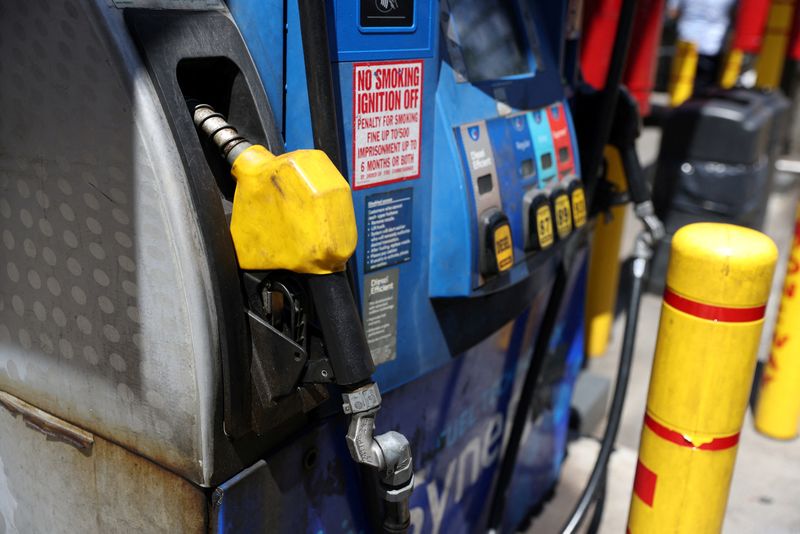TRENTON, NJ – Last week, Trump made a financial claim that sent the entire left into a social media fact checking Frenzy, but few actually checked the facts.
President Donald Trump’s recent claim that gasoline prices have fallen to $1.98 per gallon sparked widespread confusion and debate, particularly as retail gas prices across the United States remain significantly higher, averaging between $3 and $5 per gallon.
So why isn’t gas $1.98 in New Jersey? Blame the government.
Well, it could be $2.60 if the state and federal government didn’t has such a massive fuel tax on gasoline.
In New Jersey, where pump prices hover around $3 per gallon, residents and analysts alike have questioned the basis of Trump’s statement.
A closer look reveals that the president was referencing wholesale gasoline prices, specifically the Reformulated Gasoline Blendstock for Oxygen Blending (RBOB) futures, which briefly hit $1.98 per gallon in early May 2025.
However, this figure does not reflect what consumers pay at the pump, leading to accusations of misleading rhetoric.
Ad: Save every day with Amazon Deals: Check out today's daily deals on Amazon.
On May 2, Trump posted on Truth Social, “Gasoline just broke $1.98 a Gallon, lowest in years,” prompting a flurry of fact-checking and social media backlash.
According to AAA, the national average retail price for regular gasoline was $3.18 per gallon on May 1, 2025, with no state averaging below $2.63 in Mississippi.
In New Jersey, the average retail price was approximately $3.05 per gallon, per AAA data. GasBuddy, a firm tracking prices at over 150,000 stations, reported no retail stations selling gas below $2.19 per gallon in early May, with the lowest prices found in Texas.
The $1.98 figure cited by Trump aligns with the RBOB Gasoline futures contract, which traded at $1.98 per gallon on May 1, 2025, before settling around $2 shortly after.
RBOB represents the wholesale price of unfinished gasoline before it is blended with ethanol, transported, and subjected to taxes and retail markups. Patrick De Haan, head of petroleum analysis at GasBuddy, emphasized that RBOB prices are relevant only to wholesalers, analysts, and large fuel buyers, not consumers.
That price excludes taxes, transportation, pipeline tariffs, and the cost of doing business.
In New Jersey, the retail price includes significant additional costs.
The federal gasoline tax is 18.4 cents per gallon, while New Jersey’s state gas tax is approximately 41.4 cents per gallon, totaling nearly 60 cents in taxes alone.
Additional expenses, such as transportation, storage, and retail operations, add roughly 60 to 70 cents per gallon, according to industry estimates. For example, a wholesale price of $1.98, combined with taxes and distribution costs, easily pushes the retail price to the $3 range seen at New Jersey pumps.
Trump’s claim has been criticized for lacking context, as most Americans associate gas prices with retail costs. Posts on X reflected public frustration, with users like
The White House has defended Trump’s claim by pointing to RBOB price movements, but critics argue this sidesteps the reality of consumer costs.
Some economists suggest that falling oil prices, down about 25% since Trump took office, could eventually lower retail gas prices, but no such decline has materialized as of May 2025.
The Energy Information Administration projects retail gasoline prices to average around $3.10 per gallon through 2025, consistent with current levels.
The disconnect between wholesale and retail prices highlights the complexity of fuel pricing. While Trump’s reference to $1.98 per gallon is accurate in the narrow context of wholesale markets, it has fueled confusion among consumers facing higher costs at the pump.
